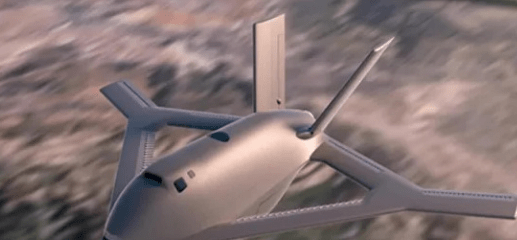Groundbreaking! The X-65 Aircraft in the US Utilizing Air Jet Flight Controls Marks a Significant Advancement in Aviation

Aurora Flight Sciences, a Boeing subsidiary, has been awarded the contract to construct the X-65 Aircraft, a full-scale aircraft, by DARPA. The goal is to replace costly and heavy control surfaces with a simpler system relying on jets of air, potentially marking a game-changing advancement.
READ: New York Businesses Ordered to Require Masks Indoors or Vaccine Proof
X-65 Aircraft
The Evolution of Aircraft Flight Control System dates back to the Wright Brothers’ first engine-powered flight in 1903, leading to the contemporary fixed-wing aircraft flight control system (AFCS). Initially, cockpit controls were mechanically linked to surfaces using rods and cables, evolving to incorporate hydro-boosters, electric signaling (fly-by-wire), and fiber-optic cables.
Recent research explores integrating flight control functions into wings through technologies like “adaptive compliant wings” or “morphing aerofoils.” Another approach involves fluidics, with larger mechanical parts being replaced by smaller fluid slots emitting air flows through jets.
The DARPA AFC Project, conducted by DARPA and Boeing’s Aurora Flight Sciences, focuses on building the X-65 aircraft utilizing active flow control (AFC) actuators. The aircraft aims to demonstrate a new method of flight control with no external moving parts, controlled entirely by jets of pressurized air. This innovative approach could reduce mechanical complexities, create additional space for crucial systems, and enhance stealth capability.
The X-65, with a 30-foot wingspan and weighing 7,000 pounds, will have both conventional moving control surfaces and AFC actuators during the experimental phase. The AFC system, featuring an array of nozzles at the ends of aerofoils, will use compressed air to alter the airflow over the aerofoil, changing the aircraft’s roll, pitch, and yaw.
If successful, the X-65 could revolutionize aircraft design by significantly reducing weight and saving volume. This experimental stage could pave the way for advanced manufacturing robotics and digital engineering, with potential applications in both military and civil aircraft, including fighter planes and, potentially, airliners within 6-8 years. In India, institutions like the National Aeronautical Laboratory (NAL), the Indian Institute of Science (IISc), and various IITs are actively researching fluid dynamics, contributing to the global pursuit of innovative aviation technologies.




